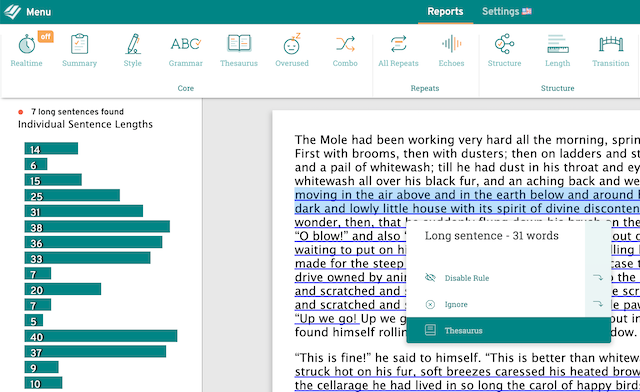
By the time students have learnt the basics of writing, they should have encountered many types of narrative and personal accounts. As they get older, they need to develop this understanding into rounded pieces of writing. That’s where you come in.
What should you include? How can you get the best out of your class? We unpick key strategies you can use to teach narrative writing well.
Show Students Good Examples of Narrative
Why is it often only younger students who get a daily story?
You can’t write something you’ve never imagined. Students need to read widely to create good work. Expose them to significant works of fiction to inspire them. Promote reading in your school and share lists for different year groups to help them find something they’ll love. Watch out for the latest releases from popular authors.
Do you find your students always read the same types of stories? It’s hard for them to be creative when they’ve only experienced one genre style. Help them move out of their comfort zone with personalised recommendations.
Which leads us to your own reading habits. Make young adult (YA) fiction part of your own reading list. Then you can make recommendations and talk to your students about the books they’re going to love.
Inspire Students with a Stimulus
It’s wonderful to see many high school teachers finding time for creative writing. But all too often students struggle to think of ideas or face the dreaded ‘blank page’ feeling.
Use a stimulus to make creative writing sessions more exciting. Whether it’s a picture, text extract, or object, you’ll find a stimulus is useful for generating ideas and adding a purpose to the writing.
Increase their interest and ownership by giving them choices. Let them have fun with what they produce. Make it a surprising experience, rather than the same boring, familiar routine every time.
Give Purpose to the Writing
Why are they writing this? If there’s no reason for it, many will be wonder why they should bother. Be creative and find a purpose for each unit of work. Smaller pieces of writing can build towards this final outcome.
They could:
- Publish their work in a class blog
- Submit to the school newspaper
- Make classroom displays
- Write individual mini-books
- Enter writing competitions
- Create class books
- Read work out in assembly
- Record it as a video
- Publish on the school’s social media accounts or website
- Send it to the author whose work inspired them
The possibilities for purposeful writing are endless. It motivates students to try harder and gives a sense of achievement when finished. Writing for writing’s sake leads to lower outcomes.

Give Students Choice
Often, you’ll need your students to write in a particular way to improve one specific area. It’s easier to limit their choices so you can hone their abilities.
But do you shut down their other chances to get creative? When you limit one area of writing, try offering them more freedom in other areas. Students are less likely to chaff about a restriction, like writing in the first person, if they get to choose everything else.
Look at Structure
When we read books, we get carried away by characters and plot. We don’t notice the structure of the text. Our students will not naturally spot the organisation that’s going on.
Unpick how narratives can be organised with your class. Play with the order of writing, looking at flashbacks, flash-forwards, alternative viewpoints, and change of narrator. When you draw attention to the structure, your students will start using it in their personal work.
Use diagrams to show how narrative writing can be structured in different ways, normally using conflict to drive the action forwards. There’s no correct way to show this. You’ll find inspiration on Pinterest and Google image searches for different story planner templates.
WAGOLL
Students can’t imagine what you’re looking for. You must show them what you expect. Sharing ‘What a Good One Looks Like’ (WAGOLL) lets them see the structure and key features you’re looking for.
Discuss what makes the WAGOLL effective and the purpose behind organisational choices. This helps them see that good narrative doesn’t just appear when they write, but requires careful planning.
Have a Way to Measure Success
Along with a WAGOLL, share a clear list of what you expect to see in this piece of writing. Students can self assess against it. You can use it for marking and add comments against this checklist.
A student-friendly criteria is useful for improving work further. Use red, amber, green (RAG) ratings so they can see at a glance one key area to focus on improving.
Create a Quick Draft
Overcome the ‘blank page’ feeling by getting your students to create a quick draft. This will give all the key points, with none of the detail they’ll add in their final piece. It’s useful for checking plot holes before they become a problem.
Share supporting structures such as sentence starters, key questions, and picture boxes. You’ll find plenty online or create your own using a free template design tool like Visme.
Once the quick draft is complete, they can decide how much time to devote to fleshing out each section.

Teach Writing Skills
There’s so much for students to learn about narrative writing. Don’t overload them with everything or they’ll have no time for any independent work.
Choose key areas to focus on in each unit. Your overview documents should show how you cover every aspect of writing over the year with opportunities for over-learning and practising skills.
Key aspects to cover include:
- Creating and punctuating dialogue
- Exposition to share back story
- Creating effective characters
- Figurative language
- Transitions between paragraphs and sections
- Creating tension and building suspense
- Effective word choice
- Writing description
- Developing flow
- Varying sentence lengths
Start your lessons by direct teaching skills before allowing a long block of uninterrupted writing time. Use the end of each session to recap on the skill focus and look for evidence of it in their work.
Teach Editing Skills
Students generally feel they’ve finished when they’ve done their full draft. It’s difficult to get them to see the benefits of editing. Leaving a gap between writing and editing is one way to help them see their work with fresh eyes. Separate proofreading from editing so they can see the difference.
Editing doesn’t need to be a boring process. You can make it engaging and useful. This essential process will help them in every area of English, so it’s worth getting it right.
If you want to help your students visualise the editing process, use ProWritingAid. It's a useful tool that provides detailed reports and tips for a wide range of areas including dialogue and sentence structure. It’s perfect for editing narrative pieces. The Sentence Length Report highlights long sentences in a piece of text.

Just open a blank document in ProWritingAid, and paste an extract in. You can turn this visualisation into a fun exercise by getting your students to try and read the sentence all in one breath, and then working out how you might vary sentence length together.
Summary
High school English lessons should never be boring. Teaching narrative lets you be creative and shows your students that writing is fun. Thinking of an exciting purpose particularly supports reluctant writers or those who struggle with imagining new ideas.
Carefully plan how you will teach discrete skills to avoid cramming everything into one unit of work. Choose a few key areas for one unit and explicitly teach them with opportunities for over-learning.
Don’t forget time to edit and improve their writing. A clear success criteria makes it easy for students to make changes and improve.


